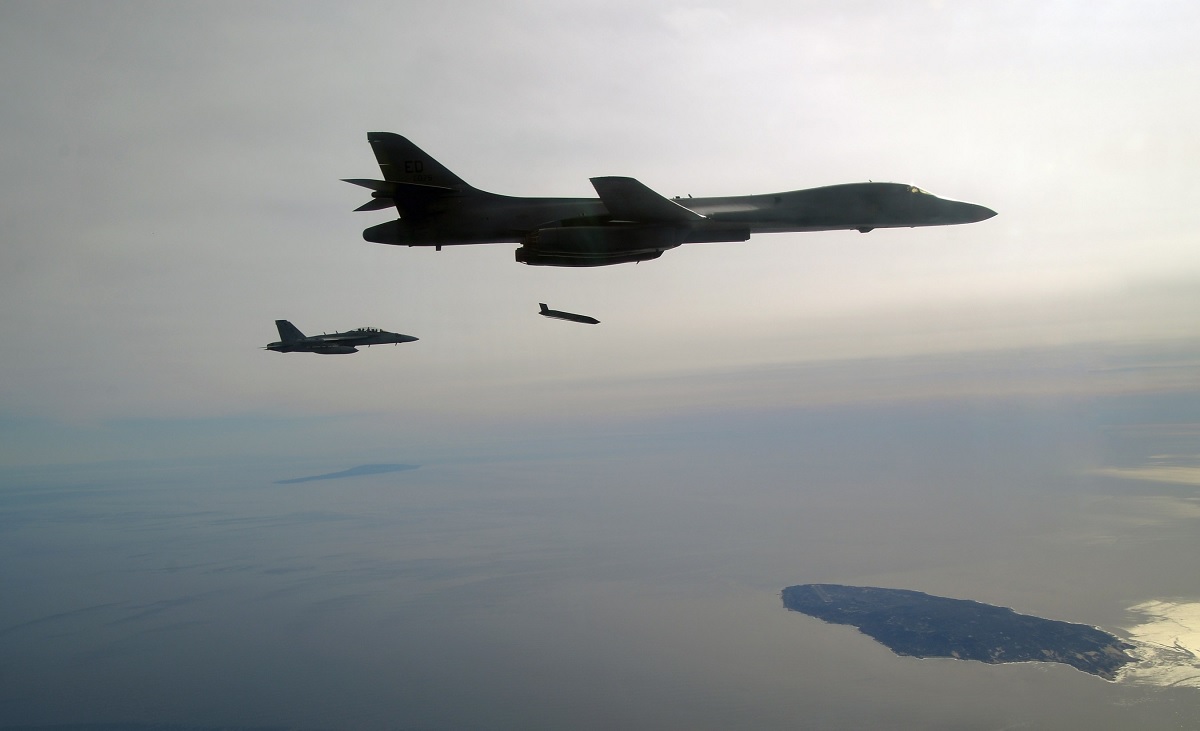On December 12, 2017, precisely thirty years later, a B-1B crew successfully fired two LRASMs in production configuration simultaneously during a test at Point Mugu’s sea range
The fascinating video in this post shows a B-1B executing a terrain-following flight to test the Lancer automatic terrain-following system on December 12, 1987, at Edwards Air Force Base (AFB).
On December 12, 2017, exactly thirty years later, a B-1B crew successfully fired two Long Range Anti-Ship Missiles (LRASM) in production configuration simultaneously during a test at Point Mugu’s sea range.
“This continued success with LRASM provides confidence in its upcoming early operational capability milestone, putting a proven, unmatched munition into the U.S. Navy and U.S. Air Force inventories,” said David Helsel, LRASM program director at Lockheed Martin Missiles and Fire Control. “The successful flight demonstrates LRASM’s continued ability to strengthen sea control for our forces.”

By utilizing cutting-edge technologies that lessen reliance on platforms for intelligence, surveillance, and reconnaissance, network connectivity, and GPS navigation, LRASM is intended to detect and kill individual targets inside groups of ships in electronic warfare scenarios. Due to its improved capacity to distinguish and perform tactical engagements from extended ranges, LRASM will play a vital role in securing military access to operate in open ocean/blue waters.
Precision-guided Joint Air-to-Surface Standoff Missile – Extended Range-based LRASM is an anti-ship standoff missile (JASSM-ER). It is made to accommodate the demands of American Navy and Air Force warfighters operating in hostile circumstances. The air-launched variant gives the U.S. Navy’s offensive anti-surface warfare Increment I requirement an early operational capability that could be integrated onboard the B-1B of the U.S. Air Force in 2018 and the F/A-18E/F of the U.S. Navy in 2019.
Photo by U.S. Air Force and U.S. Navy

